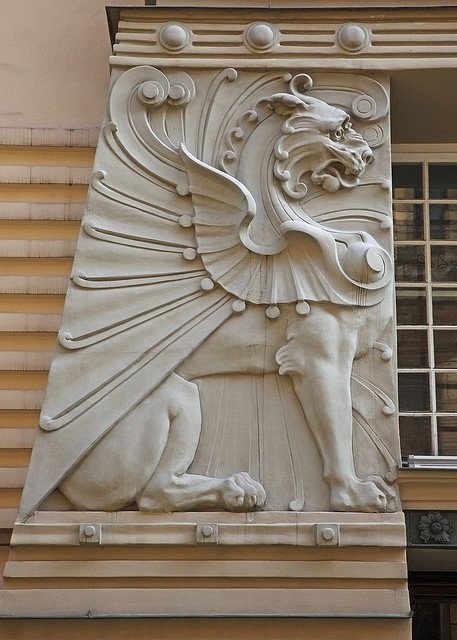#4860. Relief Winged Lion on Facade: Expressive Element of Art Nouveau Architectural Decoration
The image shows a magnificent architectural relief executed in the Art Nouveau or Art Deco style, depicting a mythical winged lion (griffin). This sculptural detail is part of the building's facade decoration. The relief is made of a light-colored material, presumably plaster or stucco, which is characteristic of the decorative finishes of the early 20th century.
The sculptural composition is distinguished by expressive plasticity and stylized forms. The lion is depicted in profile, with a powerful body and impressive wings that are rhythmically structured with parallel lines creating an impression of movement. The beast's head is crafted with particular expressiveness — a snarl, flowing mane with characteristic curls reminiscent of volutes. The architectural framing of the relief is laconic and emphasizes the monumentality of the composition.
This decorative element is an excellent example of architectural plastics, where facade decoration not only adorns the building but gives it a special symbolic meaning. The winged lion traditionally symbolizes strength, power, and protection, which was a common motif in the architecture of public buildings at the beginning of the last century.
